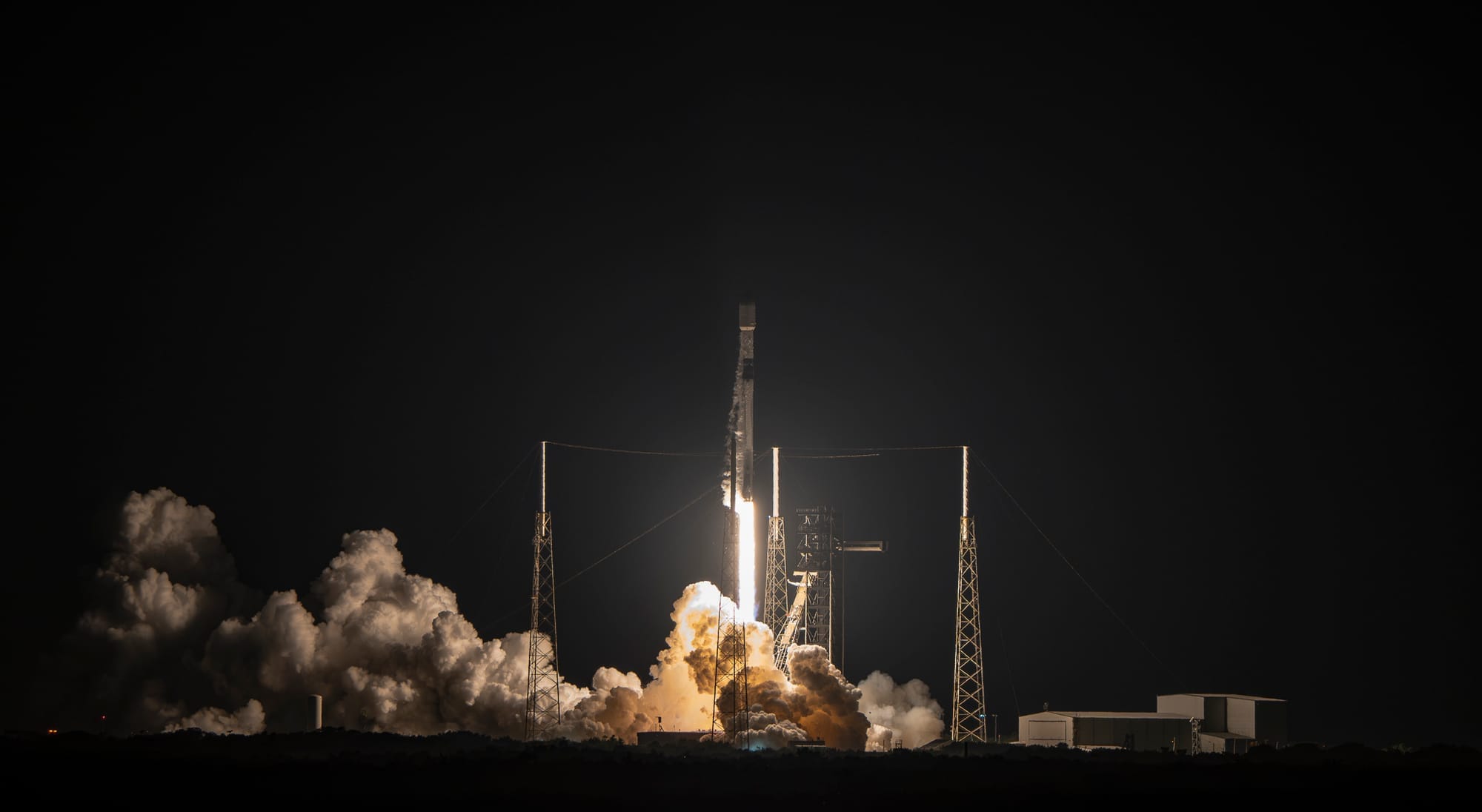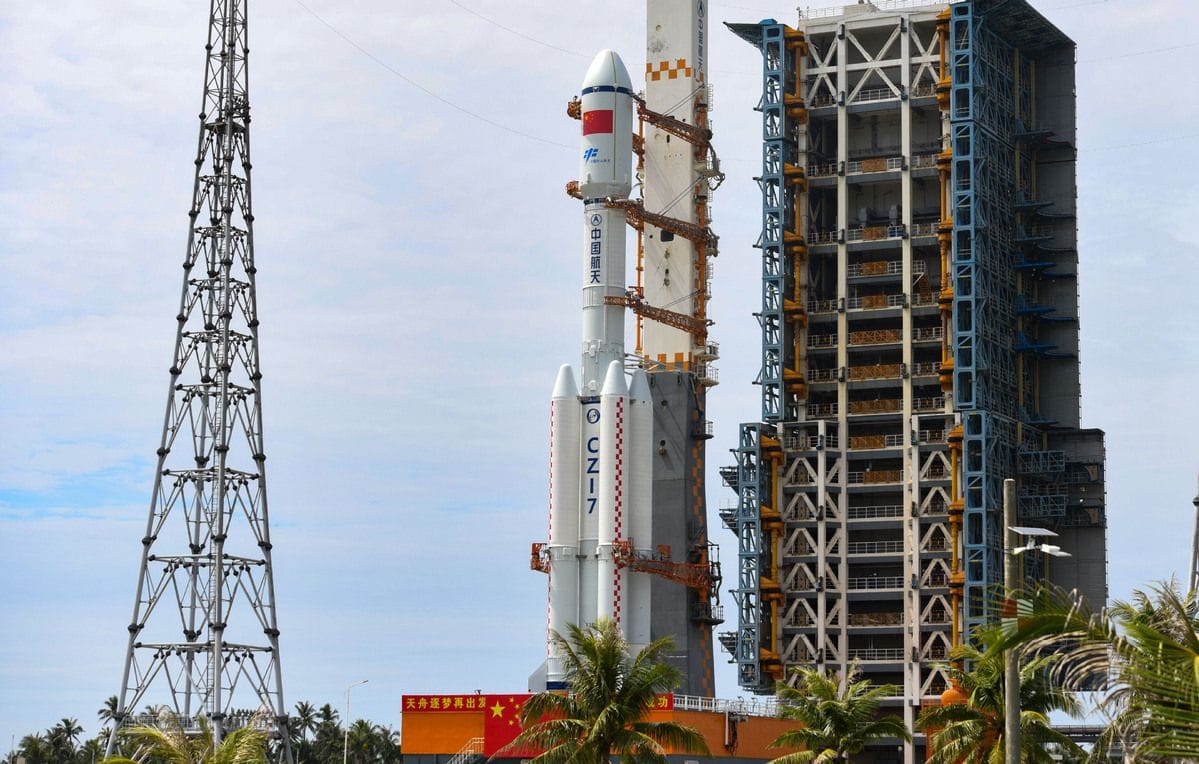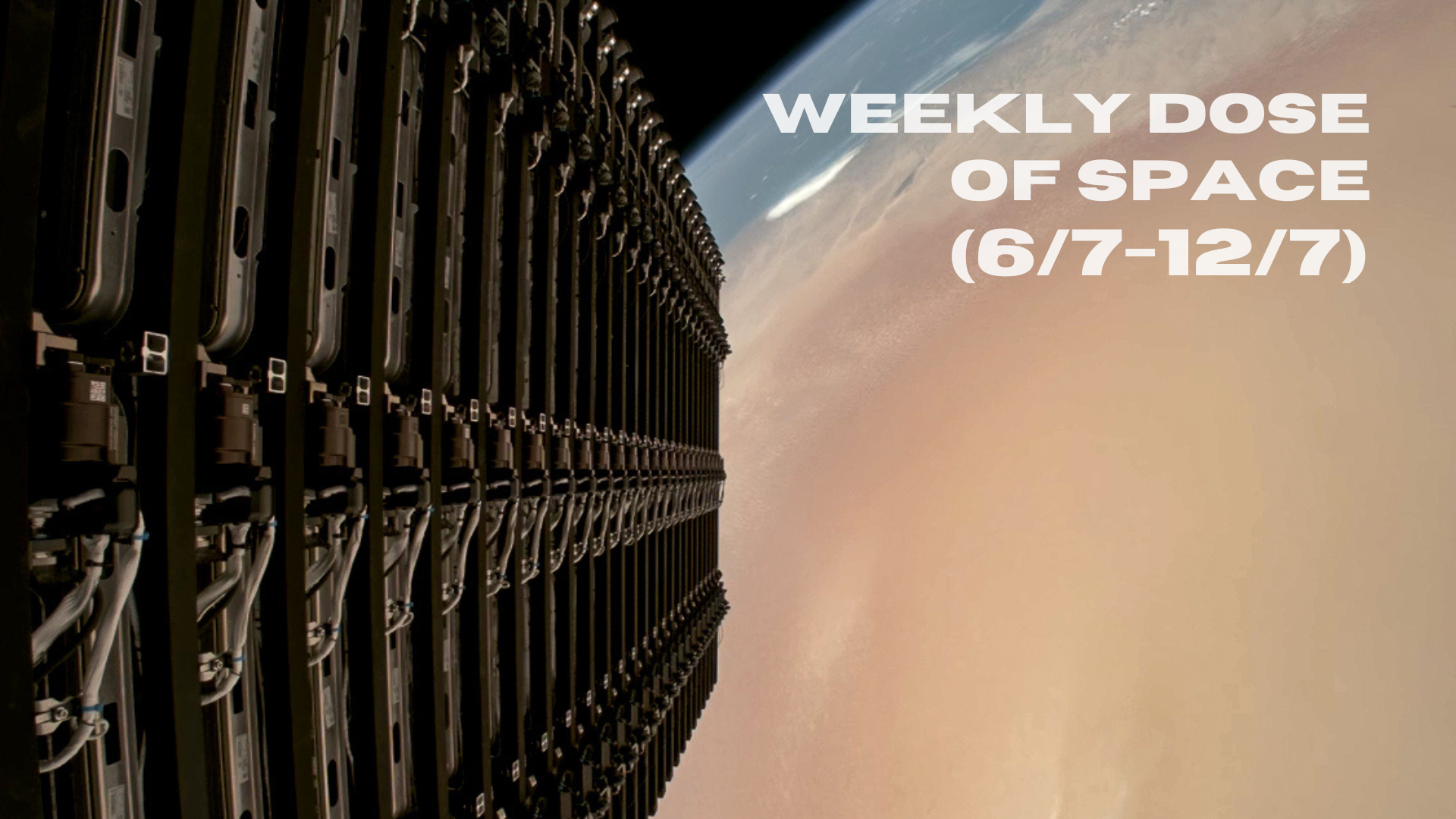Table of Contents
Welcome back to Weekly Dose of Space! This week saw just one launch taking place. News from the week saw moves to restore more NASA funding, optical communication tests in deep space, a cargo resupply mission being prepared, and a space company preparing to go public. As always, we'll also look ahead to what the worldwide launch schedule might look like next week.
Launches This Week
July 8th - Falcon 9 with Starlink Group 10-28
A Falcon 9 launched from Space Launch Complex 40, in Floirda, carrying twenty-eight Starlink satellites to low Earth orbit. Supporting this mission was booster B1077 for its twenty-second flight, with a landing downrange on the drone ship 'A Shortfall Of Gravitas'.

In Other Space News
Tiangong resupply mission prepared for launch

On July 12th, China's latest resupply mission for its Tiangong Space Station, Tianzhou-9, was rolled out to the launch pad atop of a Long March 7 rocket. The rollout had the rocket head from its assembly building to Launch Complex 201 at the Wenchang Space Launch Site.
Cargo heading for the space station aboard the Tianzhou-9 resupply spacecraft includes food and other consumables for the current Shenzhou-20 crew and future Shenzhou-21 mission, along with scientific experiments that will be performed over the next few months and years. Two new spacesuits are also being delivered alongside improvements for microgravity exercise equipment. Scientific experiments that will be performed over the next few months and years are onboard too.
At the moment, the launch of the Tianzhou-9 mission to Tiangong is expected at around 21:40 pm Universal Coordinated Time on July 14th. In the hours after launch, the resupply spacecraft will dock to the aft port of the Tianhe module, which was recently vacated by the previous cargo resupply mission.
ESA performs deep-space optical communication link
The European Space Agency shared on July 10th that it has performed Europe's first optical communication link with a spacecraft in deep space. That optical link was made via two high-precision optical ground stations to NASA's Psyche spacecraft, around 265 million kilometers away, and its Deep Space Optical Communications experiment.
The optical ground stations for the communication link were the Kryoneri Observatory and Helmos Observatory, 37 kilometers apart and both in Greece. To test the optical link, a high-power laser beacon was directed toward Psyche, carrying no data, but designed to have a return signal sent back. Regarding the challenges of sending a signal to Psyche and back, Sinda Mejri, project manager of the ESA's Ground Laser Receiver system, stated:
"Enabling this two-way optical handshake meant overcoming two major technical challenges: developing a laser powerful enough to hit a distant spacecraft with pinpoint accuracy; and building a receiver sensitive enough to detect the faintest return signal, sometimes just a few photons, after a journey of hundreds of millions of kilometres."
Building on the optical link demonstration, the European Space Agency plans to build its Advancing Solar System Internet and GrouNd (ASSIGN) network. ASSIGN aims to federate existing and planned networks into a secure and resilient interoperable network of networks, a solar system internet, for ESA’s missions as well as institutional and commercial ones.
Senate moves to restore science funding
Through July 9th and 10th, a Senate Subcommittee Markup of the Commerce, Justice, Science, and Related Agencies Appropriations Act is aiming to keep NASA science funding at Fiscal Year 2024 levels, a full restoration from the proposed Trump cuts. This would see around 7.3 billion United States Dollars provided to the space agency for its science missions.
However, at the moment the bill currently remains in the Senate. In the coming weeks, the Senate's restoration of funding for science will have to pass through the House of Representatives, where it will likely experience cuts.
Firefly eyes initial public offering
Firefly Aerospace announced on July 11th that it is filing with the U.S. Securities and Exchange Commission for an initial public offering of shares of its common stock.
Firefly intends to list its common stock on the Nasdaq Global Market under the ticker symbol 'FLY'. The number of shares to be offered and the price range for the proposed offering have not yet been determined.
Goldman Sachs & Co. LLC, J.P. Morgan, Jefferies, and Wells Fargo Securities are acting as lead bookrunning managers for the proposed offering. Morgan Stanley, Deutsche Bank Securities, and Cantor are acting as joint bookrunners. Roth Capital Partners and Academy Securities will serve as co-managers.
What to Expect Next Week
July 13th - Electron with JAKE 4
Electron is believed to be preparing for a suborbital military-related mission from Wallops, Virginia.
July 13th - Falcon 9 with "Commercial GTO 1"
SpaceX may be preparing for a launch to geostationary transfer orbit with Falcon 9 from Space Launch Complex 40.
July 14th - Long March 7 with Tianzhou-9
The China Manned Space Agency is preparing its Tianzhou-9 cargo resupply spacecraft for a launch to the Tiangong Space Station atop of the China Academy of Launch Vehicle Technology's Long March 7 from the Wenchang Space Launch Site.
July 15th - Falcon 9 with Starlink Group 15-2
A batch of twenty-six Starlink satellites is planned to head to low Earth orbit from Space Launch Complex 4E, in California.
July 15th - Eris for its debut flight
Gilmour Space is planning to perform the debut flight of its Eris rocket from the Bowen Orbital Spaceport, in Australia.
July 16th - Falcon 9 with KF-01
Amazon may launch its first batch of Kuiper satellites atop of a Falcon 9, in a mission dubbed KF-01 (Kuiper Falcon-01), from Space Launch Complex 40 to low Earth orbit.
July 17th - Starlink Group 17-3
From Space Launch Complex 4E, a Falcon 9 is planning to launch a batch of Starlink satellites to low Earth orbit.







